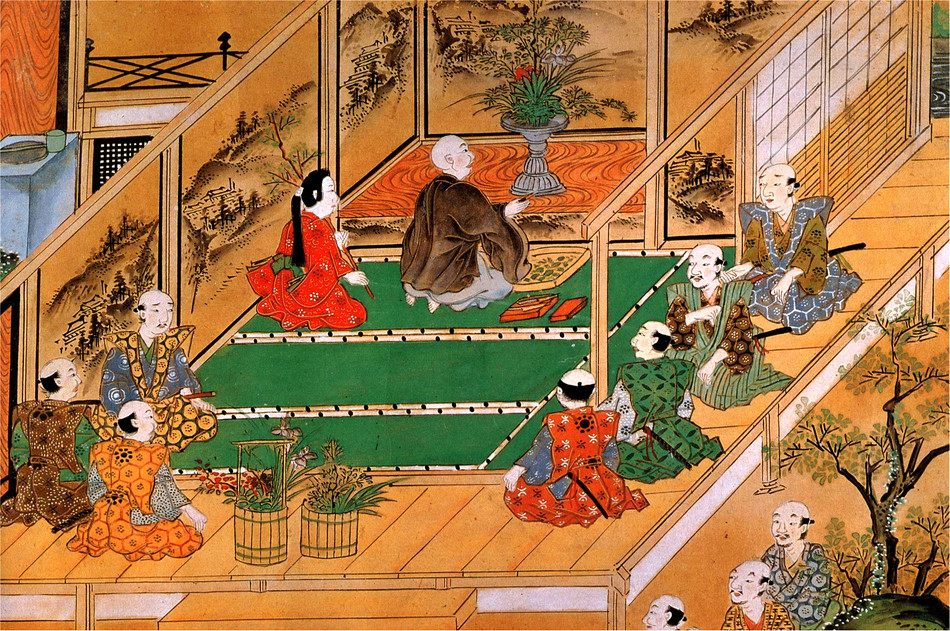Origins of Ikebana
The history of Ikebana and glimpses of when it began to evolve into the art form it is today date back as far as the 700’s when ‘Manyoshu’, Japan’s oldest anthology of poems, were compiled. Of these poems numerous references to flowers can be found.
During the Kamakura period (1192 ~ 1333) Ikebana became a form of meditation for Zen Buddhist priests. It was custom to place floral offerings in front of alters to honor the Buddha and the souls of the dead. Over time, these offerings evolved into floral arrangements designed to express the harmony between spirit and matter. Arrangements were originally composed of three main lines of differing height together creating a three dimensional form – the balance between the lines symbolizing the unity between spirit, man and earth.

The warrior class or ‘Samurai’ brought great lifestyle changes to Japanese society during the Kamakura period, making it fashionable to display Ikebana arrangements in the homes of wealthy townsmen. Samurai would create Ikebana not merely as a flower arrangement but a short-lived structure reflecting man’s own mortality.
Samurai would live and die like an Ikebana form but their spirit was believed to be eternal. To reach a state of concentration Ikebana was consistently performed by Samurai prior to going into battle. Through this connection with nature, the heart and mind were believed to be purified. Ikebana went on to gain substantial respect and appreciation by the imperial and military leaders of Japan in the Momoyama period (1573~1603), celebrated amongst the Samurai.
It wasn’t until 1831 that Ikebana became open to the participation of woman along with a growing influence from the West. The following 100 years brought with it a new generation of creativity resulting in styles of Ikebana that began to push boundaries.
Poem from a Manyoshu book issued in the Kanei period (1624-1645)
‘Haru no sono kurenai niou momo no hana shitaderu michi ni idetatsu otome’
‘In my springtime garden, on the path beneath the peach blossoms radiating a crimson glow, a maiden steps in view and pauses for a moment’.
‘In my springtime garden, on the path beneath the peach blossoms radiating a crimson glow, a maiden steps in view and pauses for a moment’.
Ikebana is linked closely to other Japanese arts of which share spiritual roots in Zen Buddhism, these arts include sado (the way of the tea ceremony), sumi-e brush painting and the art of sword making. The unique hard-to-define qualities in these arts tantalize and entice an interest in viewers. A successful Ikebana arrangement will appear to be enshrouded with an aura, to be alive. Traditionally a sword smith would speak of the ‘soul’ of the blade in the vaguest most mystical terms. In recent times young sword makers have studied and become quite clinical about exact furnace temperatures or the moment when flexibility, rigidity, strength “the soul” of the blade is actually created. Although these are vital facts that need to be mastered for future generations, I feel, as with Ikebana, that it is important not to let the technical side in modern day take precedence to the spiritual.
Donna Canning
Ikebana Artist
Ikebana Artist
Origins of Ikebana



